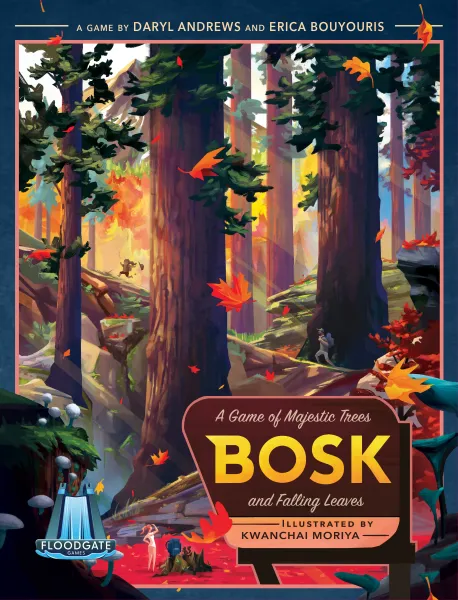


One of the things I love most about the tabletop gaming hobby is the breadth of experiences, settings, and themes that designers attempt to tackle. While conflict or competition is frequently still central to the experience, smart game makers often find ways to tap into surprising corners of the imagination for inspiration.
For gamers more used to marching armies, firing guns, and casting spells, the idea of buying and playing a game about growing trees or flowers may come across as almost absurd. Nonetheless, recent years have seen a treasure trove of excellent games with that theme, representing an impressive variety of strategic complexity and artistic depth. And sometimes, it’s these very games that can manage to attract a partner, friend, or family member who is turned off by the more violent stuff.
But why are there so many of these plant-focused games in the first place? Whether we choose to recognize it or not, growing things is a core conceit of most modern games, whether you’re talking about character progression, drafting and developing new players for an in-game team, or building up an engine of production. As a thematic conceit, the growing and evolving qualities inherent to the natural world of plants taps into the same idea, and in a way that we all have a shared language about. Who hasn’t watched new leaves emerge on trees in the spring time?
Believe it or not, this is only a sampling of games that explore this same rich dynamic. But these are some of my personal favorites, along with recommendations about what kind of gaming group will enjoy a run at each.
There are a bunch of titles here, so I encourage you to scroll through and stop on images that attract your attention, just like a stroll through the garden. Then read a bit more about the game that caught your eye, and find out whether it might be for you.

A bosk is a lesser-used word describing a thicket or small forest, and that’s just what the game is about building. Like the earlier release of Photosynthesis (see later on this list), Bosk uses beautiful and colorful cardboard standee trees to create the illusion on the table of a growing forest. But the gameplay and strategy elements are completely different from that other game, and I’m fascinated by Bosk’s novel approach to game flow.
In Bosk, two to four players each control a species of trees growing in a national park, and a single session is played in about 45 minutes to emulate the in-game passage of a single year. Plant trees in the spring along a grid-based board, and you gain points for impressing the passing hikers as they move through the forest during the summer. As autumn comes around, the trees throw down their leaves, which blows in designated directions, and players go through another scoring phase in the winter determined by their tree color’s leaf coverage on the board.
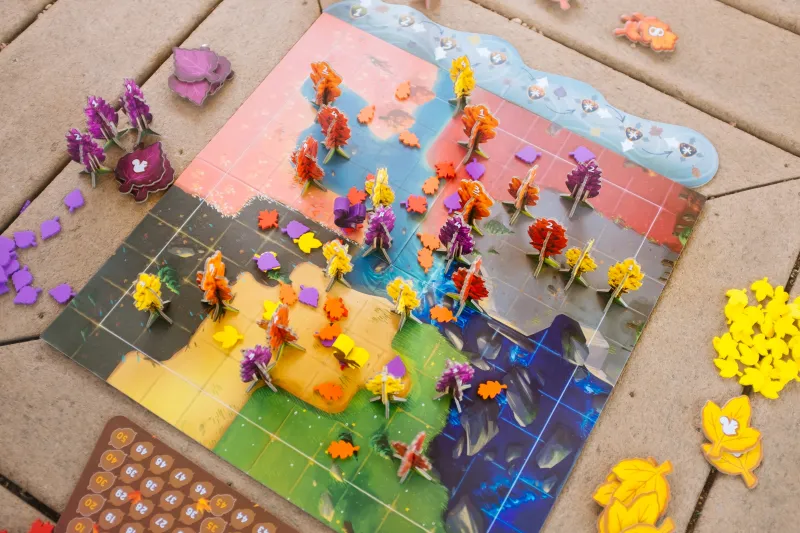
Beyond the gorgeous artistic presentation and table tableau presented by Bosk, it’s the ebb and flow of the different seasons that makes for an especially compelling play. Players must constantly be looking ahead and planning for later turns, and additional quirks add wrinkles, like the presence of a squirrel figurine that can shift leaf locations in a more organic way instead of following the vagaries of the breeze blowing.
A newcomer to consideration for this list, Bosk isn’t yet widely available from publisher Floodgate Games, but you can put in your pre-order now at your preferred retailer if you want to lock down your copy ahead of release this summer. This is a beautiful game that should have broad appeal to look at, but some of the long-play strategic ideas mean it’s likely to be most compelling to adult players.
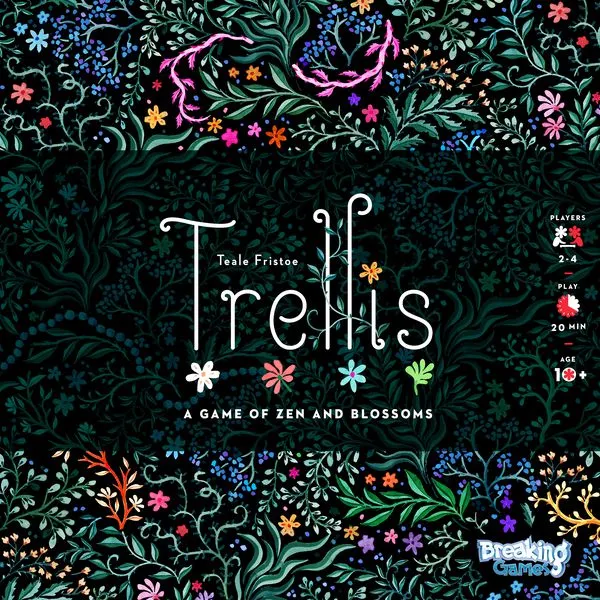
I think a lot of players will be surprised at the sophistication of this seemingly elementary game about playing flowers onto an increasingly intertwined sequence of vines. I was certainly impressed after my first few games. Trellis can be played by two to four players in under 30 minutes, but I suspect many gaming groups may find the game taking up significantly more time with repeated plays, as everyone tries out new approaches to play.
Players compete to exhaust all their available flower tokens by having them bloom onto vines. Vines are played onto the board in an increasingly tangled series of multicolored hex tiles. On their turn, players lay a tile connected in some way to the previous tiles, and then lay a flower on one of the newly laid vines. If that vine is attached to another vine of the same color, and there’s not already a flower there, you place more flowers. Likewise, if your tile placement causes another player’s flower to connect to a same-colored vine, they also get to lay one or more flowers. By helping other players’ flowers bloom, you help yourself, and get a chance to claim yet another vine.
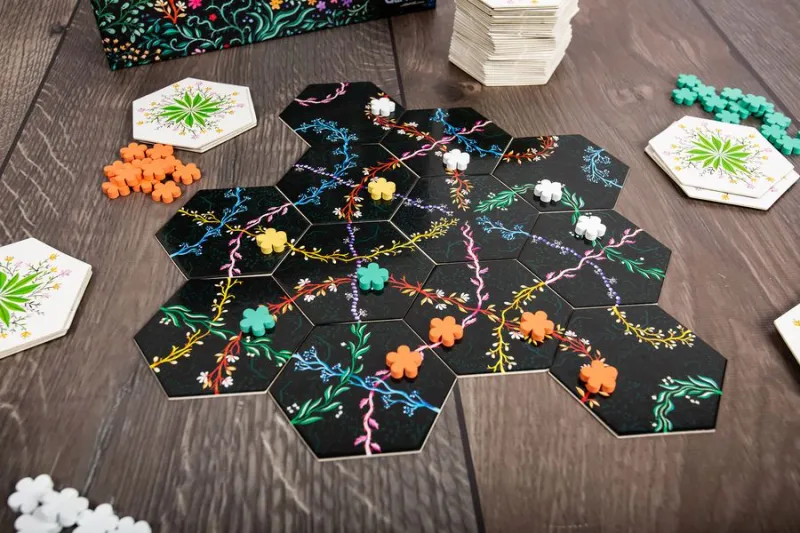
Trellis has that wonderful quality that you can lay it out on the table and start playing, almost without any instruction to newcomers. Simply place the starting tile, begin playing, and explain things as they come up. I love the way the trellis of vines emulates the real way that flowers sprout and grow in new directions, guided in part by the gardener, but often with a will of their own. Trellis has a contained scope and an appealing look that should be a great fit for most play groups, and is an ideal appetizer game before a longer night of gaming.
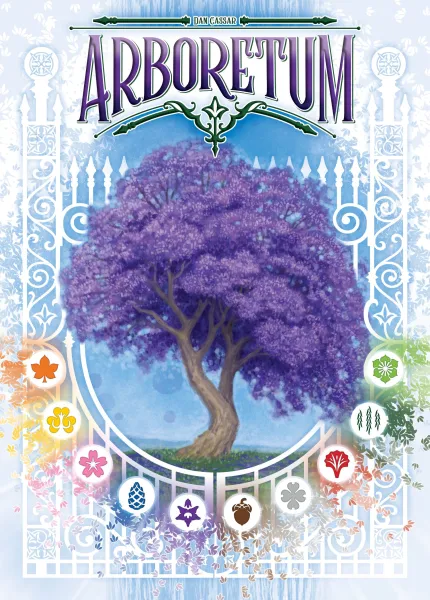
An ideal game for those analytical minds out there, Arboretum is a card game of careful strategy for two to four players. If you’re playing with a group of players who are more familiar with traditional suit-based card games, the numbered cards and set collection gameplay of Arboretum may be just the ticket.
The cards depict colorful and evocative art of several different tree species, like willow, cherry blossom, and oak, as well as a number from 1 to 8 for each of the ten species (totaling 80 cards). Players play cards onto the table into an ever-growing personal grid that represents their arboretum, and draw new cards to replace ones that have been played or discarded. After the deck is exhausted, players can only score for a given color/species if they’ve managed to maintain the highest numerical value of cards in that color in their hand. As such, there’s a balancing act between the cards you lay out (which are worth points) and those you hold back in your hand (so you can score those points in the first place). Presuming you get to score a particular color, the value of your score is determined by how you’ve placed the cards, in orderly rows that move numerically from low to high numbers.
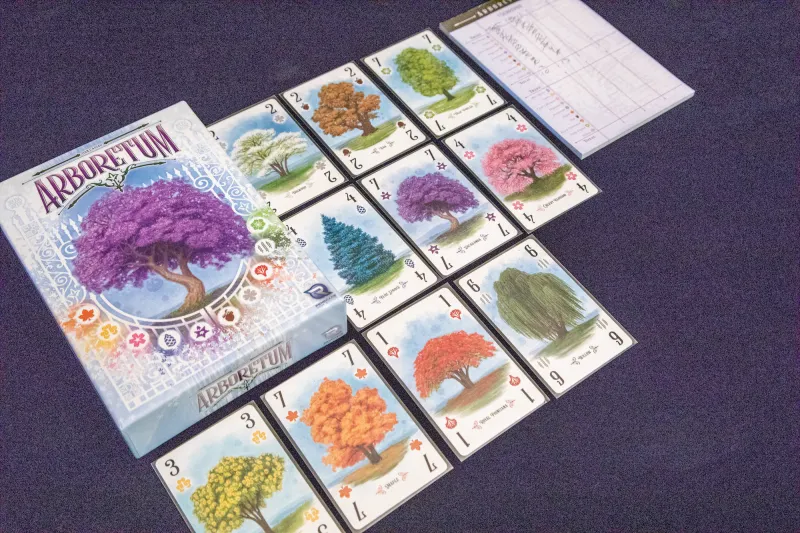
If you’re shaking your head a bit trying to wrap your head around the concept, you’re actually beginning to grasp why Arboretum is so intriguing. While the concept of how to play is quite simple, the ability to look ahead and plan for your endgame takes a lot of foresight, and you’re constantly watching other players to see how their turns unfold, and which cards they have in play, because that means you won’t have access to those cards. It’s appealing in the same way that counting cards in Blackjack might be for some people, as you weigh probabilities and work the system to your advantage.
Arboretum is nuanced and intelligent, and isn’t the best pick for a raucous get-together. Save it instead for a quiet night with close friends who enjoy careful deliberation in their gaming, and I think you’ll be very pleased.
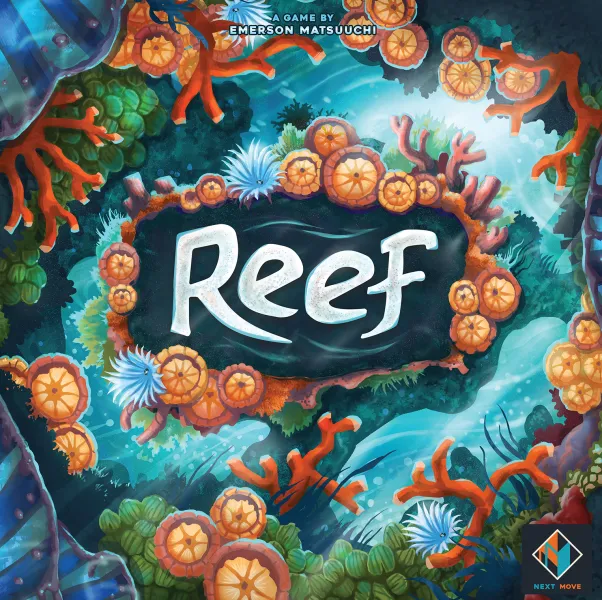
First of all, for all the biology nerds out there, let’s get this out of the way; I know coral reefs aren’t actually plants. But it seemed a shame to miss out on talking about the wonderfully charming Reef in this article, so it’s getting a pass, and squeezing into the round-up as being at least vaguely plant-like.
Many board game enthusiasts may recognize the name Azul, as the acclaimed abstract strategy tile-laying game from 2017. While it’s not exactly accurate to call Reef an official sequel, its similarly abstract playstyle echoes many of the traits that made Azul one of the most celebrated releases of that year.
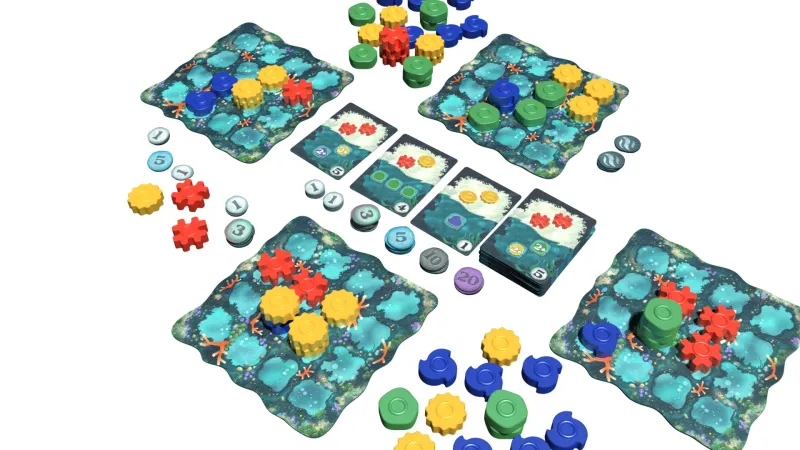
Players work to evolve and develop their coral reef over the course of a game that takes under an hour to play, which sure beats the many decades or centuries it takes an actual reef to grow. Each player has their own personal reef to develop, and you’re playing cards to both get new colored reef pieces to play, but also to score points for particular color patterns that can be created on the reef.
The bright hues of the plastic reef pieces and their stackable quality on the table is attractive to folks like myself who are fans of high component quality. As the game unfolds, there’s something really engaging about seeing your reef grow in height and complexity, and finding new patterns within the seeming chaos.
Of all the entries on this list, Reef might be the friendliest to the broadest array of player groups. Welcoming to families with kids as young as eight or nine, Reef nonetheless has the sophistication to ensure compelling play for veteran gamers.
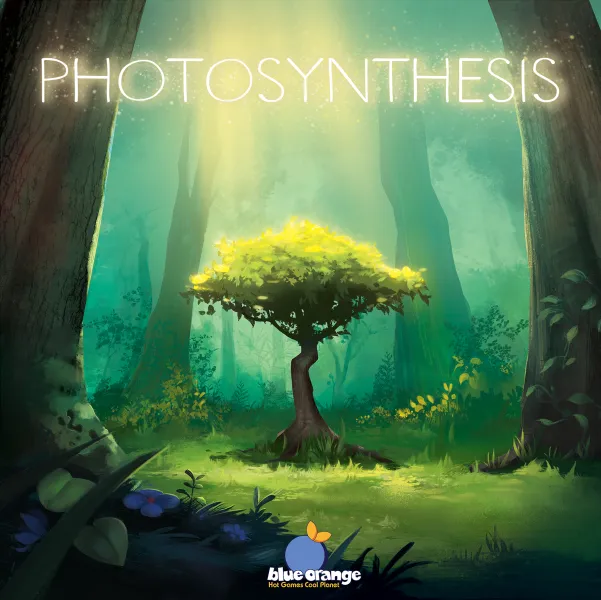
It’s not the first time the Photosynthesis has made it into this column, and I suspect it won’t be the last. One of my personal favorite releases of the last few years, Photosynthesis is a game with rich ecological themes, compelling strategy, and a need for lateral thinking. This game comes out onto my table all of the time, and it’s far more competitive and challenging than you might expect from a game with such a gentle conceit.
Players each usher a single color of trees to life across a growing forest. Individual trees grow over time (represented by larger cardboard standees), and their shadows block the life-giving sunlight from trees at a lower height. Trees at the center of the forest are likely to be worth a lot of points, but as the game plays out, spots on the periphery of the forest take on increased value, since they can block the sunlight when the sun is coming in from that direction.
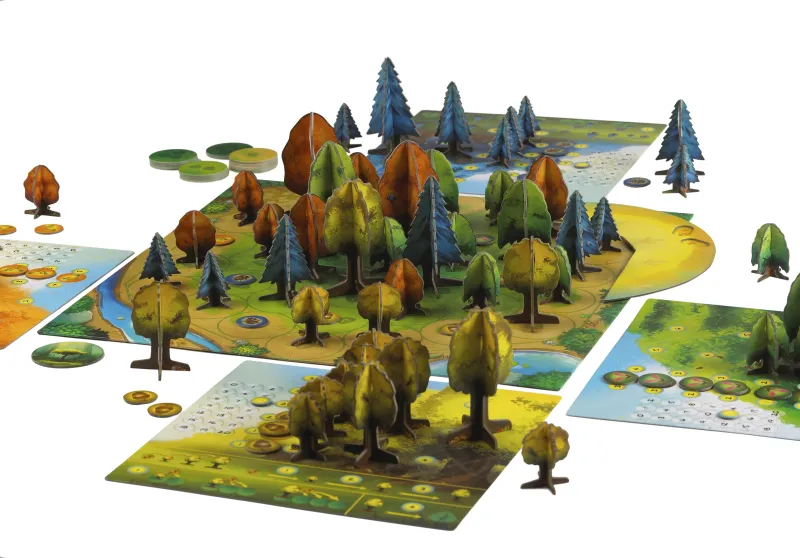
The most fascinating aspect of play is the shifting sun, represented by a cardboard segment that rotates around the board with each passing turn. You must consider not only how light will come in from the current angle, but how it might gain you advantage from five other angles that the sun will move to over the course of the game.
Photosynthesis looks simply awesome with a game in full swing on the table, with cardboard trees of varying heights helping to illustrate the full life cycle of a growing forest. Even the death and falling of an ancient tree helps to fuel subsequent growth, so the circle-of-life overtones are captured and crystallized right in the game mechanics. Two to four players can play Photosynthesis together, but I enjoy it best with a full complement of four players, where the strategic give and take really shines. Here's a more complete write-up.
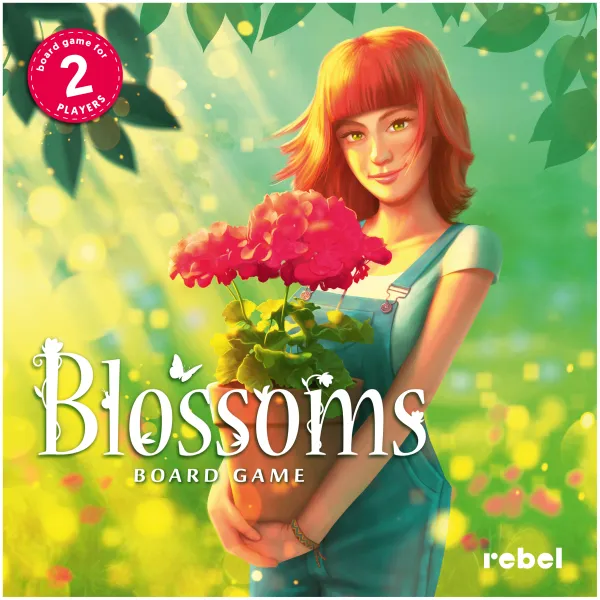
Looking for a game to share with your partner or spouse, as a bonding point between your love of games and their love of gardening? This entry is for you. The lovely two-player game called Blossoms is an attractive and accessible game that can be played exclusively by two players and completed in about 30 minutes or less.
Each player is working to grow a variety of different flowers like roses, tulips, and irises. By playing cards that depict these flowers into a “pot,” you watch as individual stalks grow longer and higher, until you decide to cut them and add them to your personal bouquet. At the end of the game, you score points for particularly impressive flowers of a single type (made up of several cards of the same flower variety) as well as the variety of different flowers in your bouquet.
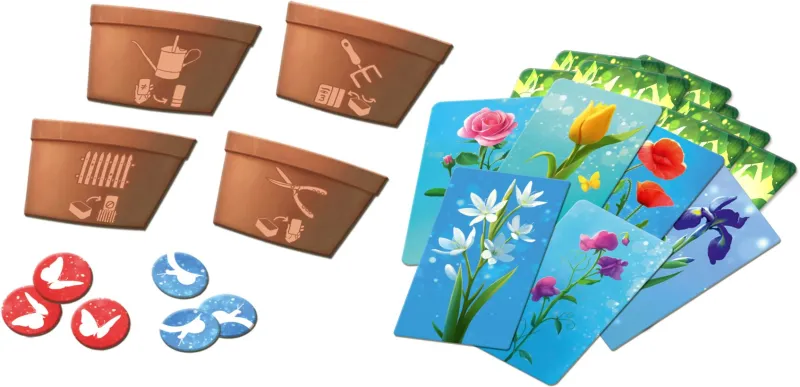
Blossoms is a straightforward and easy-to-learn game. While there are some additional twists in the form of special actions like a watering can or rake that let you adjust the flow of cards into your hand, the game ultimately hinges on the juggling act between the two paths to victory points, and always keeping both in mind. It’s that very simplicity that makes it a great fit for looping in an opposing player without huge amounts of gaming experience, but even dedicated gamers will appreciate the pretty cards and compact gameplay structure.
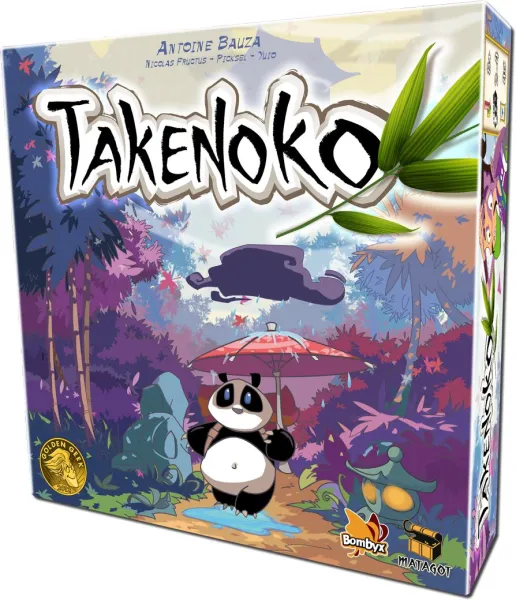
This charming game has a few more narrative elements than the other entries on the list, and might be the right fit for your group if some of the other entries feel too abstract. The game is set in the Imperial Gardens of feudal Japan, and you manage the harried imperial gardener as he simultaneously attempts to maintain his plants while ensuring that the giant panda that lives there (a gift from the Chinese emperor) gets enough to eat.
Each player has different objectives drawn from their cards about how they need the board to appear. On their turn, players roll a weather die that provides a random extra bonus, like an extra action or bamboo growth. The bamboo is depicted as actual 3D plastic pieces that slot together with one another, so the grove on the table slowly builds higher. You’re also moving the panda miniature around as he chomps down on the various bamboo stalks, even as the gardener wanders about, new tiles of the garden go out, and water components are used to irrigate different plots. Every player is working toward different ends, and there’s great fun in trying to shape the garden to your whims.
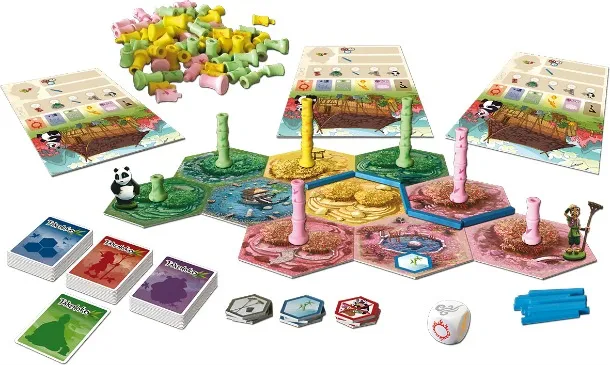
Takenoko features incredible production values on the little bamboo shoots and miniatures, and it’s a joy to see the game display grow and expand across the table over the course of the game. I love the ideas of harmonious interaction between the varied objectives, since they each rely on each other, whether you’re trying to complete a particular tile layout, have the panda eat a particular color of bamboo, or let the gardener grow a certain variety of bamboo to a designated height. The lightweight feel of the mechanics, hour-long play time, and especially the adorable panda, all combine to make this an ideal fit for family game night.
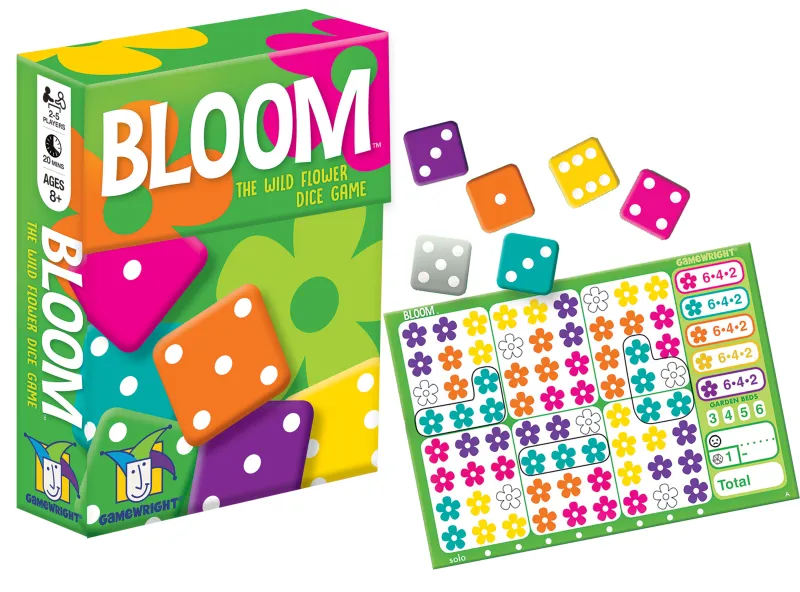
Care for a little dice-rolling with your plant theme? Check out Bloom, built for two to five players to play in about 20 minutes. While it’s not exactly a true party game, Bloom’s simple mechanics don’t take a lot of attention or focus, so it’s a good fit for more active get-togethers that include folks who don’t normally do a lot of gaming. In many ways, the game shares a great deal in common with Bingo – a conceit that pretty much everyone should be able to grasp.
In the game’s abstraction, players are each flower arrangers at a flower shop, attempting to satisfy different customers as they come in looking for the perfect flower bouquet. Customer requests are represented by one of six uniquely colored dice rolled at the start of the round. Players take turn snagging one of the colored dice, and then pulling together part of the bouquet to match with the number depicted on that die. Your selection of available flowers is represented on a paper sheet (the game comes with a whole pad) which depicts one of five different layouts of flowers. You circle adjacent flowers on your paper sheet with a pen or pencil, ideally matching the exact number and color shown on your die. Circling flowers of a different color makes the customer unhappy, and loses you points. Players also gain points for other accomplishments on their sheet, like circling all the flowers of a given color (and shouting “Bouquet!”) or circling all the flowers in given garden bed/section of their sheet.
The dice-rolling and pen-and-paper circling/scoring dynamic (often referred to as roll-and-write) of Bloom is oddly appealing to certain players, presumably as it gives a sense of ownership over the brief game as it plays out. The bright colors and appealing ease-of-play make it a great fit for family game night, and the spatial reasoning element will really click for the right players.
All of the games on this list share the trait of accessible play to some degree, and I’ve found that the themes of trees and flowers can pull in players who might be reticent to explore some other common board game themes. If you’ve got a family or friend group with that dilemma, consider investing in one of these splendid projects, and see if the change in scenery to ideas about growth and life manage to engage a player who otherwise looks bored when the games start going out on the table.
If you’re ready for some other tabletop recommendations, click into the Top of the Table banner below to visit our hub, where you’ll find dozens of great games from all sorts of concepts. And if after that you’re still struggling to pick out your next board game, hit me up via email and tell me what you’re looking for!

Explore your favorite games in premium print format, delivered to your door.